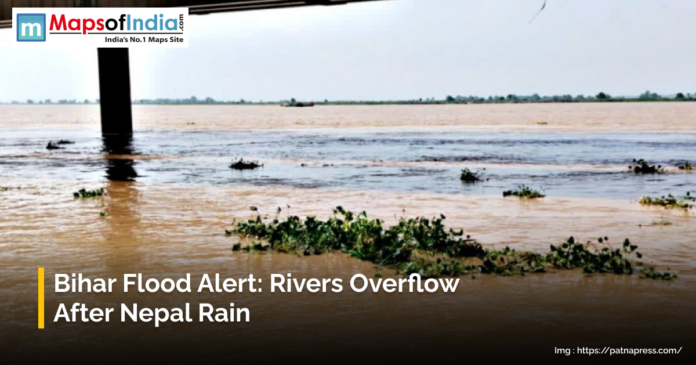Extensive flooding in Nepal has impacted the entire state of Bihar (northern districts), causing massive destruction and an interruption of everyday activities. The torrents have filled up the major rivers such as the Kosi and Mahananda, as well as various tributaries, taking the water to levels that are well above the danger point. Hundreds of villages have been inundated in such districts as Supaul, which caused thousands of people to leave their houses. This has forced governments to open the floodgates of barrages, including the Birpur Barrage, in order to control the increasing rivers, and this has had additional effects on the lower regions. Its impact has been the flooding of agricultural land, destruction of houses and breakdown of road and rail networks, making life difficult for both the people and the relief organizations.
The extreme rainfall between 110 and 200 millimetres in various locations has flooded the different infrastructures in the area, making rescue and relief efforts extremely difficult. They have sent their teams to the affected districts to offer emergency relief in the form of food, drinking water, and temporary shelter to affected families. Relief camps are establishing medical and sanitation facilities to avoid water-borne disease outbreaks that mostly occur after floods. The administration is in the process of constantly keeping an eye on the water levels of major rivers and liaising with the other adjacent districts in order to evacuate early enough and reduce casualties.
Bihar is another state where low-lying communities and those along the banks of rivers have also been exposed to the situation of floods. Numerous individuals have been rendered homeless as well as dispossessed of their livestock, and some of the key services like electricity and communication networks have been brought down in various localities. To be on the safe side, schools and public offices have been shut down in the most at-risk areas. Rescuing the stranded individuals and taking them to the safe areas has been done by community members together with the local authorities. There are also efforts to repair embankments and to fortify flood-prone areas to ensure that more damage is not done.
The Indian authorities are liaising well with those in Nepal in order to control the discharge of surplus water and curb overflow. This is the cross-border cooperation which plays a very significant role in managing the common river systems and the safety of millions of people residing along the Kosi, Mahananda and other rivers. With the floods still growing bigger, relief efforts are still on the agenda, but they are aimed at delivering temporary help and restoring normality. The current crisis has made it apparent that disaster preparedness, an early warning network, and durable infrastructure are critical to reduce the effects of natural calamities in flood-prone areas such as Bihar.










